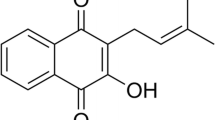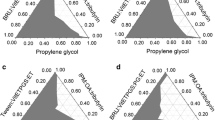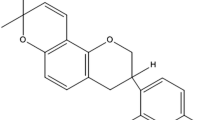Abstract
This study reports the microemulsion (ME) effects on the permeation of genistein across normal (intact) and microporated human skin. The genistein formulation was optimized to know the stable ME region in the pseudo-ternary phase diagrams and to maximize the skin permeation and retention of genistein. The phase diagrams were constructed with different oil phases, surfactants, and their combinations. The influence of formulation factors on the permeation through intact and microporated human skin was determined. Based on its wide ME region, as well as permeation enhancement effects, oleic acid was used as an oil phase with various surfactants and co-surfactants to further maximize the ME region and skin permeation. The water content in the formulation played an important role in the ME stability, droplet size, and flux of genistein. For example, the ME with 20% water exhibited 4- and 9-fold higher flux as compared to the ME base (no water) and aqueous suspension, respectively. Likewise, this formulation had demonstrated 2- and 4-fold higher skin retention as compared to the ME base (no water) and aqueous suspension, respectively. The skin microporation did not significantly increase the skin permeation of genistein from ME formulations. The ME composition, water content, and to a lesser extent the ME particle size played a role in improving the skin permeation and retention of genistein.






Similar content being viewed by others
References
Piovesan AC, Soares Júnior JM, Mosquette R, Simões MD, Simões RD, Baracat EC. Morphological and molecular effects of isoflavone and estrogens on the rat mammary gland. Revista Brasileira de Ginecologia e Obstetrícia. 2005;27(4):204–9.
Brand RM, Jendrzejewski JL. Topical treatment with (−)-epigallocatechin-3-gallate and genistein after a single UV exposure can reduce skin damage. J Dermatol Sci. 2008;50(1):69–72. https://doi.org/10.1016/j.jdermsci.2007.11.008.
Vera JC, Reyes AM, Velasquez F, Rivas CI, Zhang RH, Strobel P, et al. Direct inhibition of the hexose transporter GLUT1 by tyrosine kinase inhibitors. Biochemistry. 2001;40(3):777–90. https://doi.org/10.1021/bi001660j.
Wei H, Zhang X, Wang Y, Lebwohl M. Inhibition of ultraviolet light-induced oxidative events in the skin and internal organs of hairless mice by isoflavone genistein. Cancer Lett. 2002;185(1):21–9. https://doi.org/10.1016/s0304-3835(02)00240-9.
Widyarini S, Husband AJ, Reeve VE. Protective effect of the isoflavonoid equol against hairless mouse skin carcinogenesis induced by UV radiation alone or with a chemical cocarcinogen. Photochem Photobiol. 2005;81(1):32–7. https://doi.org/10.1562/2004-06-02-ra-183.1.
Shyong EQ, Lu Y, Lazinsky A, Saladi RN, Phelps RG, Austin LM, et al. Effects of the isoflavone 4′, 5, 7-trihydroxyisoflavone (genistein) on psoralen plus ultraviolet A radiation (PUVA)-induced photodamage. Carcinogenesis. 2002;23(2):317–21. https://doi.org/10.1093/carcin/23.2.317.
Peak MJ, Peak JG. Solar-ultraviolet-induced damage to DNA. Photo-Dermatology. 1989;6(1):1–5.
Beehler BC, Przybyszewski J, Box HB, Kulesz-Martin MF. Formation of 8-hydroxydeoxyguanosine within DNA of mouse keratinocytes exposed in culture to UVB and H2O2. Carcinogenesis. 1992;13(11):2003–7. https://doi.org/10.1093/carcin/13.11.2003.
Kim SY, Na YJ, Kim D, Kim Y, Kim HM, Hwang SH, et al. Development of estimation methods of skin oxidation and evaluation of anti-oxidative effects of genistein in topical formulations. The Korean Journal of Physiology & Pharmacology. 2012;16(3):205–9. https://doi.org/10.4196/kjpp.2012.16.3.205.
Foti P, Erba D, Riso P, Spadafranca A, Criscuoli F, Testolin G. Comparison between daidzein and genistein antioxidant activity in primary and cancer lymphocytes. Arch Biochem Biophys. 2005;433(2):421–7. https://doi.org/10.1016/j.abb.2004.10.008.
Pavese JM, Farmer RL, Bergan RC. Inhibition of cancer cell invasion and metastasis by genistein. Cancer Metastasis Rev. 2010;29(3):465–82. https://doi.org/10.1007/s10555-010-9238-z.
Chadha G, Sathigari S, Parsons DL, Jayachandra BR. In vitro percutaneous absorption of genistein from topical gels through human skin. Drug Dev Ind Pharm. 2011;37(5):498–505. https://doi.org/10.3109/03639045.2010.525238.
Silva AP, Nunes BR, De Oliveira MC, Koester LS, Mayorga P, Bassani VL, et al. Development of topical nanoemulsions containing the isoflavone genistein. Die Pharmazie-An International Journal of Pharmaceutical Sciences. 2009;64(1):32–5. https://doi.org/10.1691/ph.2009.8150.
Del Gaudio P, Russo P, Dorado RR, Sansone F, Mencherini T, Gasparri F, et al. Submicrometric hypromellose acetate succinate particles as carrier for soy isoflavones extract with improved skin penetration performance. Carbohydr Polym. 2017;165:22–9. https://doi.org/10.1016/j.carbpol.2017.02.025.
Kang KH, Kang MJ, Lee J, Choi YW. Influence of liposome type and skin model on skin permeation and accumulation properties of genistein. J Dispers Sci Technol. 2010;31(8):1061–6. https://doi.org/10.1080/01932690903224813.
Kitagawa S, Inoue K, Teraoka R, Morita SY. Enhanced skin delivery of genistein and other two isoflavones by microemulsion and prevention against UV irradiation-induced erythema formation. Chem Pharm Bull. 2010;58(3):398–401. https://doi.org/10.1248/cpb.58.398.
Huang ZR, Hung CF, Lin YK, Fang JY. In vitro and in vivo evaluation of topical delivery and potential dermal use of soy isoflavones genistein and daidzein. Int J Pharm. 2008;364(1):36–44. https://doi.org/10.1016/j.ijpharm.2008.08.002.
Moore JO, Wang Y, Stebbins WG, Gao D, Zhou X, Phelps R, et al. Photoprotective effect of isoflavone genistein on ultraviolet B-induced pyrimidine dimer formation and PCNA expression in human reconstituted skin and its implications in dermatology and prevention of cutaneous carcinogenesis. Carcinogenesis. 2006;27(8):1627–35. https://doi.org/10.1093/carcin/bgi367.
Andrade LM, de Fátima RC, Maione-Silva L, Anjos JL, Alonso A, Serpa RC, et al. Impact of lipid dynamic behavior on physical stability, in vitro release and skin permeation of genistein-loaded lipid nanoparticles. Eur J Pharm Biopharm. 2014;88(1):40–7. https://doi.org/10.1016/j.ejpb.2014.04.015.
Busby MG, Jeffcoat AR, Bloedon LT, Koch MA, Black T, Dix KJ, et al. Clinical characteristics and pharmacokinetics of purified soy isoflavones: single-dose administration to healthy men. Am J Clin Nutr. 2002;75(1):126–36. https://doi.org/10.1093/ajcn/75.1.126.
Rangsimawong W, Wattanasri P, Tonglairoum P, Akkaramongkolporn P, Rojanarata T, Ngawhirunpat T, et al. Development of microemulsions and microemulgels for enhancing transdermal delivery of Kaempferia parviflora extract. AAPS PharmSciTech. 2018;23:2058–67. https://doi.org/10.1208/s12249-018-1003-6.
Tabosa MA, de Andrade AR, Lira AA, Sarmento VH, de Santana DP, Leal LB. Microemulsion formulations for the transdermal delivery of lapachol. AAPS PharmSciTech. 2018;19(4):1837–46. https://doi.org/10.1208/s12249-018-0995-2.
Lv X, Liu T, Ma H, Tian Y, Li L, Li Z, et al. Preparation of essential oil-based microemulsions for improving the solubility, pH stability, photostability, and skin permeation of quercetin. AAPS PharmSciTech. 2017;18(8):3097–104. https://doi.org/10.1208/s12249-017-0798-x.
Panapisal V, Charoensri S, Tantituvanont A. Formulation of microemulsion systems for dermal delivery of silymarin. AAPS PharmSciTech. 2012;13(2):389–99. https://doi.org/10.1208/s12249-012-9762-y.
Hashem FM, Shaker DS, Ghorab MK, Nasr M, Ismail A. Formulation, characterization, and clinical evaluation of microemulsion containing clotrimazole for topical delivery. AAPS PharmSciTech. 2011;12(3):879–86. https://doi.org/10.1208/s12249-011-9653-7.
Kantarcı G, Özgüney I, Karasulu HY, Arzık S, Güneri T. Comparison of different water/oil microemulsions containing diclofenac sodium: preparation, characterization, release rate, and skin irritation studies. AAPS PharmSciTech. 2007;8(4):75–81. https://doi.org/10.1208/pt0804091.
Salerno C, Carlucci AM, Bregni C. Study of in vitro drug release and percutaneous absorption of fluconazole from topical dosage forms. AAPS PharmSciTech. 2010;11(2):986–93. https://doi.org/10.1208/s12249-010-9457-1.
Kogan A, Garti N. Microemulsions as transdermal drug delivery vehicles. Adv Colloid Interf Sci. 2006;123:369–85. https://doi.org/10.1016/j.cis.2006.05.014.
Kreilgaard M. Influence of microemulsions on cutaneous drug delivery. Adv Drug Deliv Rev. 2002;54:S77–98. https://doi.org/10.1016/s0169-409x(02)00116-3.
Dreher F, Walde P, Walther P, Wehrli E. Interaction of a lecithin microemulsion gel with human stratum corneum and its effect on transdermal transport. J Control Release. 1997;45(2):131–40. https://doi.org/10.1016/s0168-3659(96)01559-3.
Qi X, Qin J, Ma N, Chou X, Wu Z. Solid self-microemulsifying dispersible tablets of celastrol: formulation development, characterization and bioavailability evaluation. Int J Pharm. 2014;472(1–2):40–7. https://doi.org/10.1016/j.ijpharm.2014.06.019.
Patel MR, Patel RB, Parikh JR, Solanki AB, Patel BG. Effect of formulation components on the in vitro permeation of microemulsion drug delivery system of fluconazole. AAPS PharmSciTech. 2009;10(3):917–23. https://doi.org/10.1208/s12249-009-9286-2.
Kolli CS, Xiao J, Parsons DL, Babu RJ. Microneedle assisted iontophoretic transdermal delivery of prochlorperazine edisylate. Drug Dev Ind Pharm. 2012;38(5):571–6. https://doi.org/10.3109/03639045.2011.617753.
Moghadam SH, Saliaj E, Wettig SD, Dong C, Ivanova MV, Huzil JT, et al. Effect of chemical permeation enhancers on stratum corneum barrier lipid organizational structure and interferon alpha permeability. Mol Pharm. 2013;10(6):2248–60. https://doi.org/10.1021/mp300441c.
Chen L, Tan F, Wang J, Liu F. Microemulsion: a novel transdermal delivery system to facilitate skin penetration of indomethacin. Die Pharmazie. 2012;67(4):319–23. https://doi.org/10.1692/ph.2012.1150.
Williams AC, Barry BW. Penetration enhancers. Adv Drug Deliv Rev. 2012;64:128–37. https://doi.org/10.1016/j.addr.2012.09.032.
Francoeur ML, Golden GM, Potts RO. Oleic acid: its effects on stratum corneum in relation to (trans) dermal drug delivery. Pharm Res. 1990;7(6):621–7.
Ellaithy HM, El-Shaboury KM. The development of Cutina lipogels and gel microemulsion for topical administration of fluconazole. AAPS PharmSciTech. 2002;3(4):77–85. https://doi.org/10.1208/pt030435.
Malcolmson C, Satra C, Kantaria S, Sidhu A, Lawrence MJ. Effect of oil on the level of solubilization of testosterone propionate into nonionic oil-in-water microemulsions. J Pharm Sci. 1998;87(1):109–16. https://doi.org/10.1021/js9700863.
Berner B, Mazzenga GC, Otte JH, Steffens RJ, Juang RH, Ebert CD. Ethanol: water mutually enhanced transdermal therapeutic system II: skin permeation of ethanol and nitroglycerin. J Pharm Sci. 1989;78(5):402–7. https://doi.org/10.1002/jps.2600780512.
Sarpotdar PP, Zatz JL. Percutaneous absorption enhancement by nonionic surfactants. Drug Dev Ind Pharm. 1986;12(11–13):1625–47. https://doi.org/10.3109/03639048609042599.
Sarpotdar PP, Zatz JL. Evaluation of penetration enhancement of lidocaine by nonionic surfactants through hairless mouse skin in vitro. J Pharm Sci. 1986;75(2):176–81. https://doi.org/10.1002/jps.2600750216.
Hu L, Hu Q, Yang J. Enhancement of transdermal delivery of ibuprofen using microemulsion vehicle. Iranian journal of basic medical sciences. 2014;17(10):760–6.
Pershing LK, Lambert LD, Knutson K. Mechanism of ethanol-enhanced estradiol permeation across human skin in vivo. Pharm Res. 1990;7(2):170–5.
Megrab NA, Williams AC, Barry BW. Oestradiol permeation across human skin, silastic and snake skin membranes: the effects of ethanol/water co-solvent systems. Int J Pharm. 1995;116(1):101–12. https://doi.org/10.1016/0378-5173(94)00321-u.
Notman R, Anwar J. Breaching the skin barrier—insights from molecular simulation of model membranes. Adv Drug Deliv Rev. 2013;65(2):237–50. https://doi.org/10.1016/j.addr.2012.02.011.
Lane ME. Skin penetration enhancers. Int J Pharm. 2013;447(1–2):12–21. https://doi.org/10.1016/j.ijpharm.2013.02.040.
Pawar KR, Smith F, Kolli CS, Babu RJ. Effect of lipophilicity on microneedle-mediated iontophoretic transdermal delivery across human skin in vitro. J Pharm Sci. 2013;102(10):3784–91. https://doi.org/10.1002/jps.23694.
Acknowledgements
This study received financial support from Auburn University Research Initiative in Cancer (AURIC) and the intramural grant program (IGP) from the Auburn University, AL.
Author information
Authors and Affiliations
Corresponding author
Additional information
Guest Editor: S. Narasimha Murthy
Electronic Supplementary Material
ESM 1
(DOCX 71 kb)
Rights and permissions
About this article
Cite this article
Chen, L., Annaji, M., Kurapati, S. et al. Microemulsion and Microporation Effects on the Genistein Permeation Across Dermatomed Human Skin. AAPS PharmSciTech 19, 3481–3489 (2018). https://doi.org/10.1208/s12249-018-1150-9
Received:
Accepted:
Published:
Issue Date:
DOI: https://doi.org/10.1208/s12249-018-1150-9




